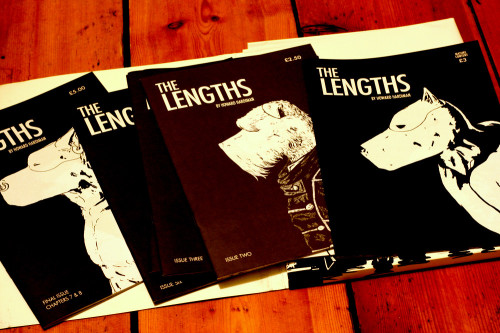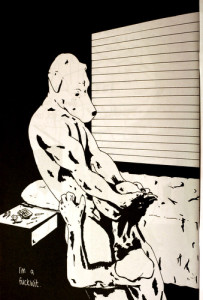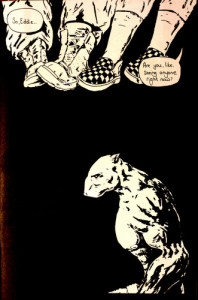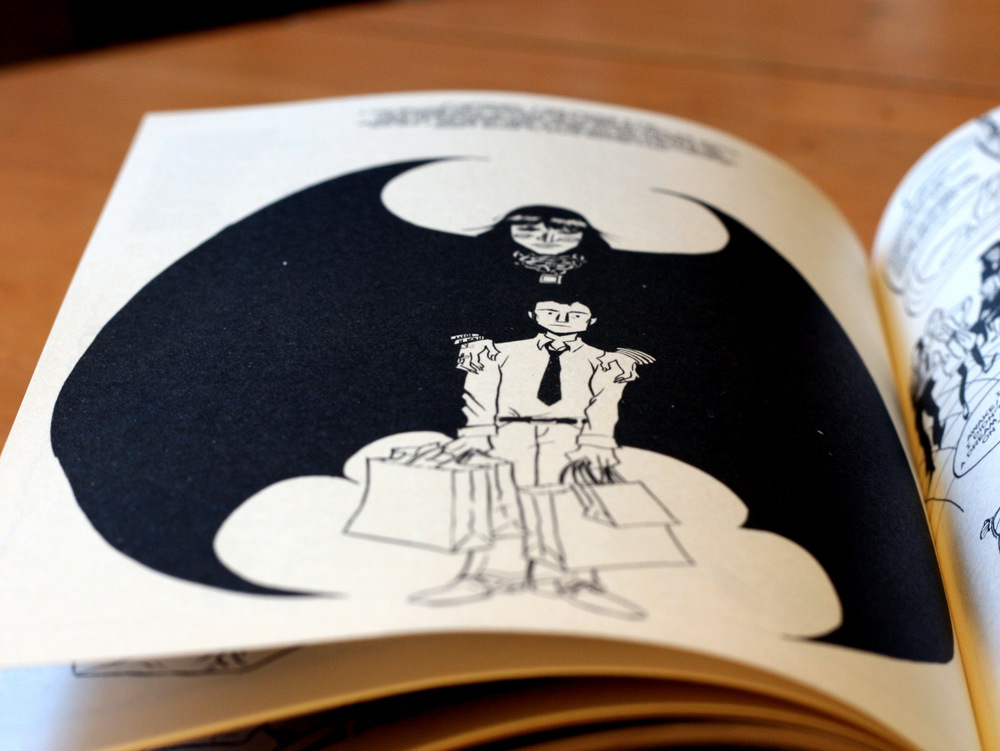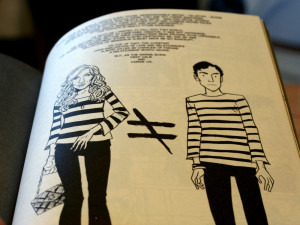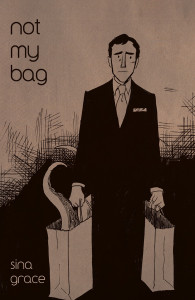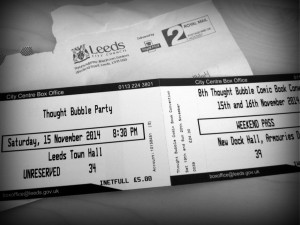 My tickets for Thought Bubble arrived today. It's five months away, but I'm already childishly excited. Heck, I booked tickets as soon as I saw they'd been released.
Why?
My tickets for Thought Bubble arrived today. It's five months away, but I'm already childishly excited. Heck, I booked tickets as soon as I saw they'd been released.
Why?
The short answer: because it kicks enough arse to win a mid-to-heavyweight, quantitatively-measured arse kicking contest. Really: a lot of arse is getting kicked here. Non-trivial amounts.
To be just a little less fatuous, it kicks arse in three very particular ways:
The atmosphere
Thought Bubble is exactly how we like a comics con to feel, and we pretty much said that on the TCAF podcast. It's open and friendly, and feels like an inclusive space. Ok, so I'm a 31 year old middle class white male, so most places are going to. But I'm also a socially awkward neurotic nerd poof, and it's still pretty comfortable.
There's a mix of people. Next to the (frequently great) cosplayers, you've got folks who're just starting to get into comics. It doesn't feel like the sticky-carpeted inner sanctum of the bad comic store archetype. You don't need to authorise yourself; it's just kind of welcoming and friendly. This also means it's incredibly low stress. You mill around, you buy some stuff - there's an insane amount of exhibition space - you meet creators and fans, you go to some of the panels.
The panels
ConSequential started at Thought Bubble 2012. It actually started as the content marketing for a comics event that Thought Bubble got us inspired to run. We've parked that for a bit, and in part because Thought Bubble is kind of scratching the itch.
The quality of discussion (and of the brilliant nonsense that derails it) is pretty damn high. In particular, the (we hope regular) "Best Thing I've Read All Year" panels, the Young Avengers retrospective last year, some of the critical discussions, and the general quality of the line-up are a massive draw. It's fun, it's lively, and it's incisive.
The Safe Space Disco
Ok, so, it's actually called the Mid-Con Party, and it might be the main reason I love Thought Bubble.
My @ThoughtBubbleUK tickets arrived. Team @con_sequential is go for NERD PROM and all the stupid dancing.
— Roger Hart (@RMH40) June 25, 2014
Without the party night, Thought Bubble would still be a really good example of a standard comics show. But there's just something about dancing like an idiot, in a converted shopping centre, while your favourite comics creators DJ, playing some of your favourite records, that feels surreal in all the good ways. That atmosphere becomes quite something when you fill Thought Bubble with booze and blast it with Blondie. It still feels welcoming and fun. In fact, it's probably my favourite club night.
We're going to Thought Bubble, and we think you should too. Last year, we did a quick podcast while we were there, and got a bit breathless about the cool shit we'd found. It's a bloody delightful way to discover comics.
Leeds is pretty cool, too. Go to Friends of Ham
My Thought Bubble tickets arrived today, in a Leeds City Council envelope. My immediate thought was “Oh shit, what did I do to Leeds?”
— Clarrie Maguire (@problem_chimp) June 25, 2014
Bonus fourth reason: Thought Bubble often coincides with the Beaujolais Nouveau. We're fairly sure this is a coincidence, but we're not letting comics with a natural wine pairing go to waste. Drink up.
Shameless plug: we might be blundering about with a microphone, trying to do short interviews for the podcast. Do say hi.


